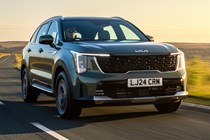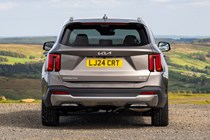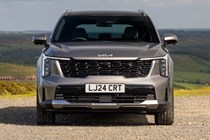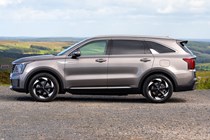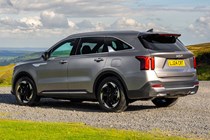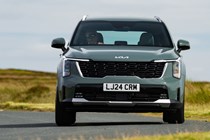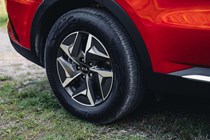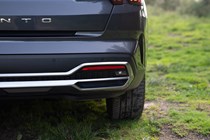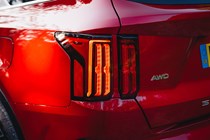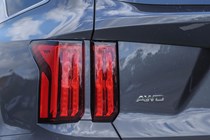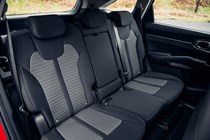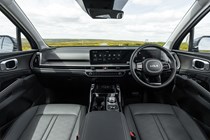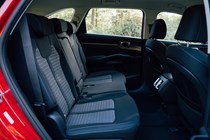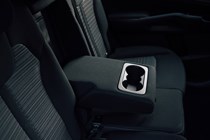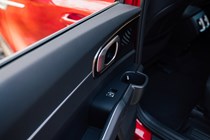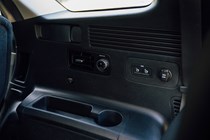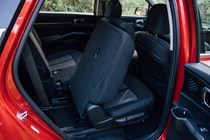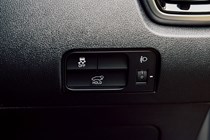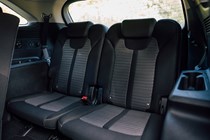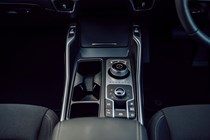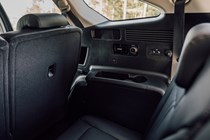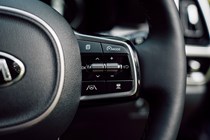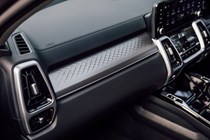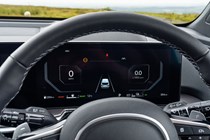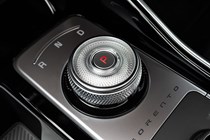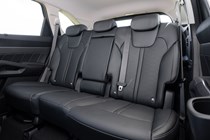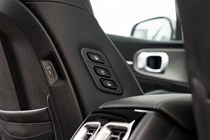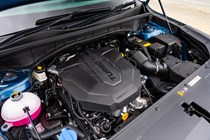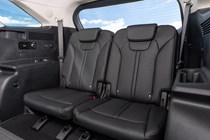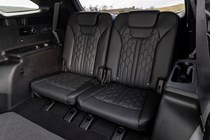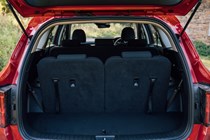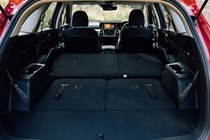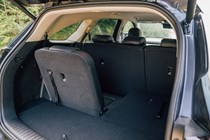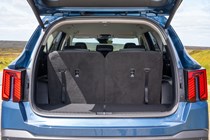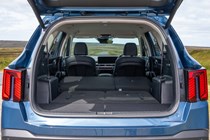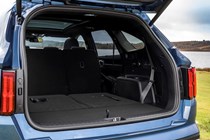Kia Sorento engines, drive and performance
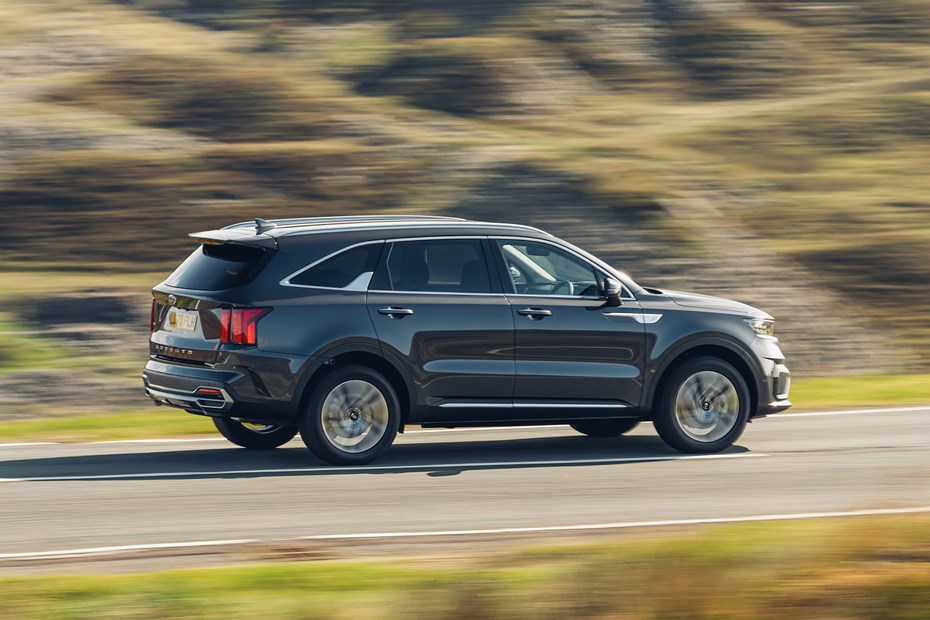
- Two hybrids and one diesel available
- Performance ranges from adequate to quick
- Diesel is the one to have for most people
Hybrid engines
There are two petrol-powered hybrid engines to choose from with the Kia Sorento. The cheapest electrified option is a self-charging hybrid which combines a 1.6-litre four-cylinder petrol engine with a 44kW electric motor and a 1.48kWh battery pack. The unit has an overall output of 229hp and 350Nm of torque.
The petrol engine tops up the battery, allowing the Sorento to potter around on electric power alone at slow speeds, such as stop-start city driving. The electrical assistance at low speeds is very welcome. It masks the fact that the Sorento is a big car powered by a relatively small engine.
Once you leave town, however, it struggles to disguise the weight the faster you go. You can gently cruise up to the national speed limit with little fuss, but if you need to overtake or slingshot down a motorway slip road, the petrol engine sounds quite coarse. Think of it as a refined high-speed cruiser and you won’t be disappointed.
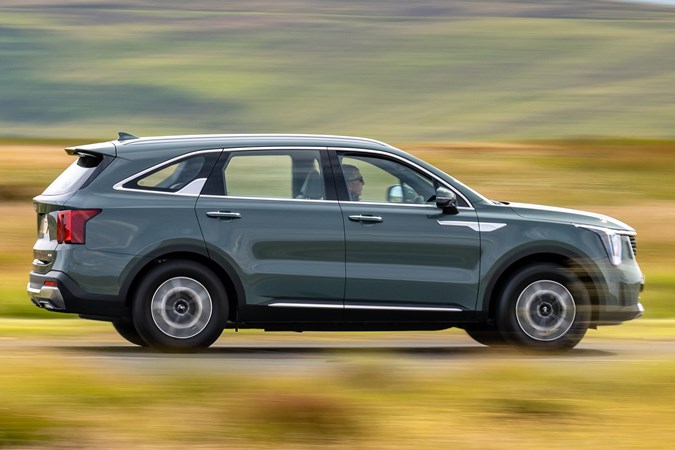
The plug-in hybrid model is a little sprightlier. The system is based around the same 1.6-litre petrol engine as the self-charging hybrid, but it has a more powerful 67kW electric motor and larger 13.8kWh battery. Power increases to 264hp, although torque remains identical at 350Nm. The extra power from the PHEV system drops the Sorento’s 0–62mph time from 9.0 to a claimed 8.7 seconds – and the car is far more willing to accelerate.
On the road, there’s more of a feeling of relaxed power here than with the cheaper self-charging hybrid version, with a little more mid-range muscle for overtaking or gaining speed on uphill inclines – areas where that car can feel pretty flat.
Also, from rest, it pulls more eagerly, even with the drive mode selector locked in Eco mode. The biggest benefits, though, are its improved fuel economy figures and maximum pure-electric range of 35 miles. More impressively than that, though, it how long the PHEV battery pack seems to manage to keep hold of its charge when driving in hybrid mode – an area where some rivals, such as the Peugeot 5008, are quite weak.
Diesel engine
The Sorento’s 2.2-litre diesel engine produces 192hp and 440Nm of torque, which Kia says is enough to shove the SUV from 0–62mph in 9.2 seconds. We think it’s an infinitely better everyday match for the Sorento than the entry-level hybrid thanks to its consistent high torque output and relaxed power delivery. Peak torque arrives at just 1,750rpm, which means it has plenty of low-down grunt – and that makes it ideal for towing.
On the road, these numbers are borne out by a more relaxed drive than you get with the hybrid models. Yes, it’s no fireball away from the lights, but on a typical A-road where constant acceleration and deceleration are the order of the day, the diesel Sorento effortlessly gets back up to speed. Don’t get us wrong, though, as the diesel can sound notably old school when accelerating and idling, but it’s a fair trade off for the additional benefits gained.
Speaking of which, towing capacity for the diesel is 2,500kg, which is very useful indeed. The self-charging hybrid model can only haul 1,650kg, while the plug-in makes do with just a 1,500kg towing capacity. Every version of the Sorento comes with four-wheel drive and an automatic gearbox, though. Hybrids get a six-speed transmission, while the diesel has an eight-speed unit.
What’s it like to drive?
- Safe, composed handling
- Not exciting, but that’s not the point
- Standard four-wheel drive benefits traction
Considering the Sorento is one of the largest SUVs in its class, it’s surprisingly easy to drive. In terms of handling, it’s responsive enough for you to pilot through small town roads without being in fear of scraping yourself or other road users. Just beware of its dimensions when you’ need to park it’re parking.
The controls are easy to use without being completely numb. The steering has a predictable, consistent weight, while the brakes on the hybrid and PHEV models have a reassuring amount of pressure that doesn’t share the conventionally notchy pedal action as the car switches between regenerative and friction braking. We found the diesel model’s brakes to be a little overly assisted, but they shouldn’t trouble most drivers once they’re used to them.
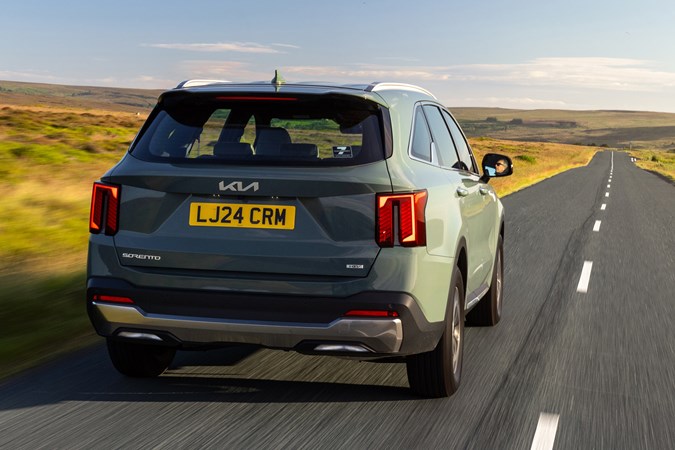
The suspension setup is firm enough to stop it from wallowing in a way that might upset passengers’ tummies, but not enough to jolt them around and possibly annoy them. In short, it doesn’t feel like you’re piloting a lorry. Trying to pedal the Sorento fast like a hatchback won’t necessarily upset the large SUV but it’ll feel rather clumsy, so it’s best to drive it in a relaxed manner.
There are plenty of drive modes to choose from, all selected by a rotary dial arranged in a similar fashion to Land Rover’s Terrain response system. You get a choice of Eco, Sport and Smart (plus an additional Comfort mode on the diesel), which adjusts throttle and steering response. Sport mode also dials up the regenerative braking while Eco allows the car to coast.


